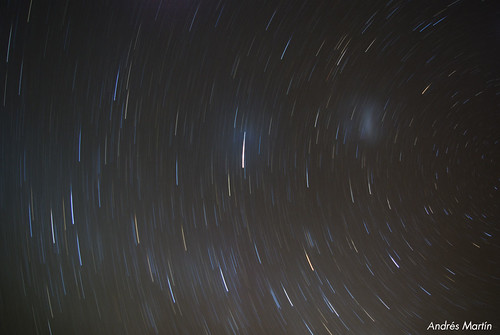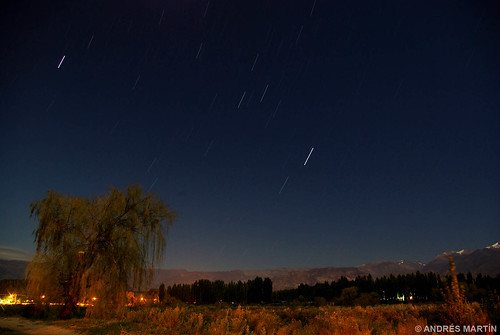 Originally posted by JackBak
Originally posted by JackBak 
Andres,
You have much darker skies available to you than most of us up here in the light polluted States. Very nice. Nice demonstration of how longer exposures can be had without blowing out the sky if you are at a dark site. By the way note that your first image's light trails are about twice as long as the second shot - corresponding to a 34 min vs 15 min exposure. Note also that your first shot caught a nebula or possibly a star cluster (smudge of light 1/3 in from the right edge of the shot).
Jack, I'm from Buenos Aires, it's the biggest city here in Argentina and the skies are quite lighted up by the city lights, For the 1st we were about 190 Kms (110-120Miles) away from Buenos Aires and for the second... I was beside the Andes mountains in a very small town.
So all you need is
Love 
I mean... To go out a little far
 Originally posted by Ash
Originally posted by Ash 
OK, now I've seen it!
(Relatively) long exposures on a K10D - and they worked!
Andres - did you need to do much to the images afterwards to remove noise?
I tried even a 30min exposure with my (then) K100D and still got a totally white result - this was trying to just shoot the dark sky (no moon) with a tree taking up a small corner of the photo.
Haven't tried it since, but will now that you've shared these results...
ASH: the "post" time is the same that the exposure... and it is NOT nice nor funny when you wait 30 min to see the photo and it's horrible or almost empty of stars :P To avoid the "White sky"... same answer that before...
 Originally posted by Moo
Originally posted by Moo 
Would an ND filter be useful to lower the light level for this type of shot?
Moo, with the ND you'll only get less stars, For example, the 34 minutes photo was a No Moon,,, it was taken at F:3,5 and the second was at F:8 WITH a polariser because it was a Full Moon night and there was too much light... As you can see, the second has much less stars...


 Similar Threads
Similar Threads 







 I have considered getting the MZ50 out to try it with actually. Some of the shots I have seen are amazing
I have considered getting the MZ50 out to try it with actually. Some of the shots I have seen are amazing


 I mean... To go out a little far
I mean... To go out a little far 















